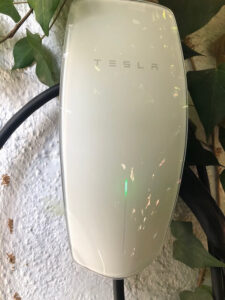 When you are an electric vehicle owner, dealing with charging becomes the next thing to do. For some, it’s easy to stick to public charging options. For others, home charging options are the best, but the same rules do not apply to every home.
When you are an electric vehicle owner, dealing with charging becomes the next thing to do. For some, it’s easy to stick to public charging options. For others, home charging options are the best, but the same rules do not apply to every home.
If you are living in a condo or apartment, the power to your home comes from a house panel that serves all occupants. This means it won’t be so easy to just install a Tesla charger without approaching your building manager.
Since many occupants share the power from a panel, the building manager can’t allow occupants to install individual charging units. The reason is that such installations will overwhelm the panel in the long run.
Does this mean you have no choice but to depend on public Tesla chargers? Not exactly. It’s possible to get a Tesla charger installation in your Los Angeles condo by following certain steps, working with the right electrician, and knowing the problems to avoid.
Read on as we guide you through it.
- Start by locating your service panel
In your Los Angeles condo, the service panel may not be in an accessible area. However, to even begin the process of installing a Tesla charger in your condo or apartment, you have to locate this service panel. Once found, a professional electrician can help you find out if the panel can accommodate another breaker or the charger installation.
- Know the parking arrangement
From knowing what your panel can and can’t carry and its location, you can move on to your parking arrangement. Where you park your EV is vital to install a charging unit. Parking arrangements in a condo or apartment usually include assigned parking spots, shared parking lots, or personal garages that can be inside or outside.
Level 2 EV chargers often come with a cord that is up to 20ft long. Hence, identifying your parking arrangement helps to know what is involved in running power from the main panel to the spot where the Tesla charger can reach your vehicle.
- Meet your building manager
This is usually where it gets tricky for EV drivers in condos or apartments. After you’ve determined the factors above, you will need to send a request to your HOA or building inspector/manager. Some managers who are familiar with installing EV chargers can help you through the process and granting permission. While others may make you go through a series of hoops or refuse to grant permission.
To help with your request, here are some things you should include;
- The charging station you need – Level 1 or Level 2.
- Where the charging unit will be installed.
- Any construction implications.
- The real estate benefits of installing an EV charger.
- Who will pay for the installation, charger maintenance, and electricity costs?
- Access to a licensed electrician to install the Tesla charger.
- A permit from the city.
A licensed electrician will get the permit from the city and be able to provide insight on most of the details you need such as the type of charging station and installation details.




